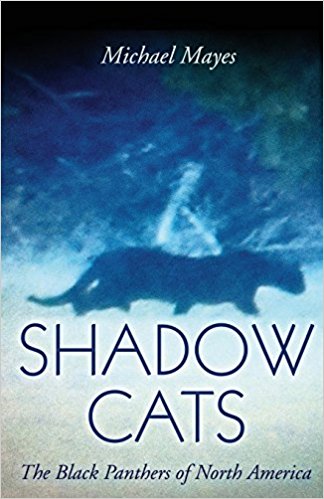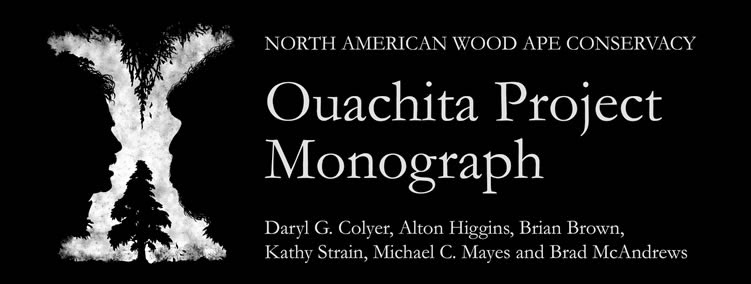It is no secret that I’m fascinated with the possible existence of large black cats in Texas and the rest of the South. I get reports weekly from people who claim to have caught glimpses of these enigmatic cats. People who grew up in rural areas often express no doubt that these animals exist. Wildlife officials, however, have a different take on the phenomenon. They insist there is no such thing as a “black panther.” They simply do not exist and never have.
I, along with many others, have put forth theories on what might explain the continued sightings and possible existence of these ghost cats. Jaguars have been suggested as a suspect. After all, they were once native to Texas and most of the southern U.S. and do exhibit melanism from time to time. Others think the most likely culprit is a wild cat called the jaguarundi. Jaguarundis can exhibit a dark gray to black coat and, while not particularly large, are significantly larger than a domestic cat. Still others feel that, despite science never having documented it, cougars might, on occasion, exhibit melanism or, at least, a much darker shade than is common. Personally, I’ve never found any of these theories totally satisfying. I had more or less settled on the theory that the most likely explanation for black panther sightings was probably a combination of the theories mentioned above, along with the occasional misidentification.
I have recently become aware of another possibility that I actually find to be quite intriguing. An article posted on the ScienceBlogs website, written by Darren Naish, discusses the possibility that large, long-tailed black cats being seen in Australia might actually be feral cats that have grown to enormous sizes. You an access the article here. In a nutshell, Naish details some intriguing evidence that suggests that once “kitty” goes feral, it, or its offspring, can reach a shockingly large size. How large is “shockingly large?” How about feral cats reaching sizes the equivalent of a small leopard? It is hard to believe but, unlike other cryptids like the sasquatch or the Loch Ness monster, there are several photos and several carcasses that seem to prove that extra large feral cats are a reality. Can this really be? Is there a new strain of Felis catus, the domestic cat, out there achieving these astounding sizes?
Mr. Naish gives several examples of large black cats caught on video that, while very large, exhibit characteristics much more akin to Felis catus than true big cats. Naish points to two pieces of footage that were played by Australian cryptozoologist Paul Cropper at a conference he attended. Cropper’s presentation was on Australian ABCs (Alien Big Cats). The two video clips Cropper played during the presentation featured footage of two large, black cats exceeding 1 meter in length. They made quite the impression on Naish and he says in his article, “But rather than being feral leopards or any other cat species that exhibits melanism, the weird thing is that these cats looked like gigantic specimens of F. catus.”
Of the first clip, Naish said, “The first bit of footage (I’ve been unable to track down details on when and where it was filmed: let me know if you can help) showed a big black cat slinking along a vegetated hillside. The cat appeared to be very large (I say this based on the size of the surrounding vegetation, and on the overall look and ‘heaviness’ of the animal), but its pointed ears, tail and gait make it look quite different from a leopard or any other big cat. It also looked nothing like a leopard cat, ocelot, caracal, lynx, or any of the golden cats. Clearly, what I’m getting at is hard to quantify, but it was as if someone had super-sized a feral moggie.”
Mr. Naish was even more impressed by the second video Cropper played. He said,“The second video that Paul showed was even more remarkable. We start with a daytime shot of a perfectly normal grey domestic cat, sat on a shrub-covered hillside near a stand of trees. Then the camera pans to the right. From behind the trees slowly emerges a big black cat, apparently more than twice the size of the grey domestic cat. Yet its head and face – which we can see in full detail – show without doubt that it is a domestic cat, with vertical pupils, pointed ears, and a dainty snout quite unlike the deeper snout of the large cats. Its shoulder blades appear proportionally big and overall it appears unusually muscular. The ordinary grey cat, sat not less than two meters away, is not in the least perturbed by the presence of this monster. I struggled to understand what I was seeing: was this some sort of trick using forced perspective?”
It seems that this second piece of footage, shot by Gail Pound and her husband in 2001 near Lithgow, New south Wales, has been quite the source of controversy down under. About the only thing everyone agrees on, according to Naish, is that the video really does show a panther-sized, black cat sitting next to a normally proportioned feral cat. Most estimations have the larger of the two cats measuring in excess of 1.5 meters (4.92 feet) from head to tail. Naish quotes a local newspaper article that summed up the conclusion of New South Wales government officials. It reads, “Last year, the NSW government asked a seven-member panel of big cat experts to view a video shot near Lithgow, west of Grose Vale, of what appeared to be a large black cat – possibly a panther – in close proximity to a large feral cat. They concluded that the larger of the two was a huge feral cat, two to three times normal size. Their reasoning was only that they did not think a feral cat would be so close to a panther.”
Mr. Naish mentions other videos, most notably that shot at Dunkeld in the southern Grampians, Victoria, in December of 2004 by Andrew Burston. The video shows what appears to be a very large, black feral cat walking in close proximity to an adult kangaroo. The cat, Naish notes, does not look like a leopard or any other known exotic. “Again, the cat looks very odd: the profile of the back appears more like that of a small cat than a large one (Felis cats have a more obviously convex lumbar and pelvic region than pumas and big cats); its tail appears proportionally too short for a leopard or puma; and its gait and the shape of its head also look more like those of a Felis cat than of a puma or big cat. This time we have an excellent scale bar, as the animal actually walks within a few metres of an adult kangaroo.”
The Dunkeld cat has been estimated to stand 75 cm (2.46 feet) high at the shoulder. This would be unusually large for a feral cat but this is the opinion of most, including Melbourne zoo official Noel Harcourt who went on record saying the cat was a large feral.
Naish also discusses several carcasses that have been brought in by hunters. One, shot in Victoria measured 1230 mm (4.04 feet) head to tail. Feral cats, Naish notes, generally measure in the neighborhood of 750-822 mm (2.56 – 2.70 feet). It should be noted that what is believed to be the largest domestic cat ever, an Australian tabby named Himmy, had an overall length of only 965 mm (3.17 feet). Yet another specimen was taken in Gippsland in June of 2005 by a hunter named Kurt Engel. This beast allegedly measured 1.6 meters (5.25 feet) in length. Engel dumped the big cat’s body but kept the tail as a souvenir. The tail alone measures 650 mm (2.13 feet) in length. DNA testing performed by Monash University, located in Melbourne, indicates this cat was F. catus.
Preliminary evidence, admittedly much of it circumstantial, seems to indicate that, in at least some cases, feral cats in Australia are growing to truly impressive sizes rivaling those of leopards and cougars. If so, it isn’t too much of a stretch to think that this could be happening in North America, too. If North American feral cats are beginning to grow to exceptionally large sizes then it could help explain black panther sightings across the continent.
As discussed earlier, various explanations and theories have been put forth to explain sightings of large, black, long-tailed cats in our country. If you are like me, you probably know them by heart. The witness saw an escaped exotic such as a leopard, they saw a known species like a jaguarundi, it must have been a normal colored mountain lion in shadows or low light, maybe it was a wayward melanistic jaguar they saw. Again, all of these theories have holes in them and I don’t feel any one of them, or a combination of all of them, can explain all black panther sightings here in Texas and North America. Of course, there is another explanation/theory that has been put forth over the years and that is that the witness saw nothing more than a domestic or feral cat. In the past, most witnesses have found this idea quite insulting. Who can blame them? Everyone knows the normal size parameters of a domestic cat, after all. Most witnesses would tell you what they saw was the size as a Labrador retriever or larger. How could that possibly be a feral cat?
Based on the article by Darren Naish referenced above, maybe we have all been too quick to be insulted. Is it possible that both witnesses who have seen the legendary black panther and skeptics that say they must have seen a domestic/feral could BOTH be right? The goings on in Australia suggests that might be the case. If feral specimens of F. catus are growing to these extraordinary sizes it could be the key to unlocking the black panther mystery. Ferals are not just common, they are everywhere. They are quite prolific. Even if only 1 out of 100 achieve this unusual size then that is significant and could go a long way toward explaining these sightings.
While not a melanistic cat, the following photo shows what looks, with the exception of its unusually large and bulky size, to be a typical domestic/feral cat. You can clearly see the head has all the hallmarks of being a domestic. Still, it looks really big. Could this be an example, from right here in Texas, of what seems to be happening in Australia? If this cat had been solid black then we’d be debating exactly what it was from now until Doomsday because it does appear to be too large to be a normal cat. The fact that it is colored like a typical housecat has, I believe, caused many to dismiss it as nothing unusual a bit too soon. There have been other examples, a large cat photographed near a feeder in the Texas Hill Country, the large black cat captured on video in Iberia Parish, Louisiana, and a large charcoal-colored cat photographed in South Texas. All seem, at first glance, to be far too large to be examples of F. catus. Knowing what we know now, maybe we should reconsider the domestic/feral cat as a candidate for at least some of the black panthers reported each year.
The puzzle that makes up the black panther picture in Texas and the American South remains incomplete. I don’t doubt that, on occasion, many of the usual theories that have been put forth regarding the phenomenon are correct. I also believe that people have been mistaken about what they’ve seen from time to time. I do not, however, believe the usual “go to” explanations satisfactorily explain all sightings. I’m not convinced that even if domestic/feral cats in North America are growing to extremely large sizes, it would explain all the sightings either. I do feel, though, that the possibility of F. catus growing to very large sizes could explain at least some of the sightings of black panthers and should be seriously considered. The black panther puzzle may remain incomplete but maybe we’ve just added a new piece.
Monday, April 21, 2014
Monday, April 7, 2014
Updated Black Panther Distribution Map
Below is the latest version of my black panther distribution map. The map now includes the latest reported sightings deemed credible and discussed in the previous two posts on this blog.
Understand, this map is not meant to be exact. I am bound by the amount of detail given to me about sighting locations by witnesses. If you are looking for GPS coordinates to get you within 20 yards of a sighting location then this map is not going to do it for you. It isn’t meant to. My intentions in mapping the sighting locations was to get a broad sense of where these cats were being spotted and hope to pick up on some “big picture” type of pattern. The overall locations are as accurate as they can possibly be on a map to this scale.
As for patterns, those previously discussed seem to be holding. Nearly all of the sightings have taken place near major waterways. In particular, sightings tend to bunch up near the headwaters of major Texas Rivers like the Sabine, Neches, Trinity, Guadalupe, San Antonio and Nueces. The exceptions to this pattern would seem to be the sightings reported along the Brazos and Colorado Rivers. It could be argued, however, that about the point the Brazos and Colorado become more than just a trickle is the point where sightings begin to take place with some measure of regularity. It should also be kept in mind that the upper reaches of both of these rivers lay in very sparsely populated areas where sightings would be less likely due to the dearth of human occupation.
The sighting map is also beginning to resemble the map of wood ape sightings in the Lone Star State as compiled by the NAWAC. Basically, the number of ape and black panther sightings increases the farther East one travels across Texas. This correlates nicely to the average amount of rainfall each region of Texas receives. Again, the farther East you go, the more rain you get. It is interesting to note that the areas where the Texas Parks & Wildlife Department admit to breeding populations of mountain lions, the Trans-Pecos/Big Bend region and deep South Texas, there have been next to no reports of large, black, long-tailed cats. What that means can only be speculated upon.
Understand, this map is not meant to be exact. I am bound by the amount of detail given to me about sighting locations by witnesses. If you are looking for GPS coordinates to get you within 20 yards of a sighting location then this map is not going to do it for you. It isn’t meant to. My intentions in mapping the sighting locations was to get a broad sense of where these cats were being spotted and hope to pick up on some “big picture” type of pattern. The overall locations are as accurate as they can possibly be on a map to this scale.
As for patterns, those previously discussed seem to be holding. Nearly all of the sightings have taken place near major waterways. In particular, sightings tend to bunch up near the headwaters of major Texas Rivers like the Sabine, Neches, Trinity, Guadalupe, San Antonio and Nueces. The exceptions to this pattern would seem to be the sightings reported along the Brazos and Colorado Rivers. It could be argued, however, that about the point the Brazos and Colorado become more than just a trickle is the point where sightings begin to take place with some measure of regularity. It should also be kept in mind that the upper reaches of both of these rivers lay in very sparsely populated areas where sightings would be less likely due to the dearth of human occupation.
The sighting map is also beginning to resemble the map of wood ape sightings in the Lone Star State as compiled by the NAWAC. Basically, the number of ape and black panther sightings increases the farther East one travels across Texas. This correlates nicely to the average amount of rainfall each region of Texas receives. Again, the farther East you go, the more rain you get. It is interesting to note that the areas where the Texas Parks & Wildlife Department admit to breeding populations of mountain lions, the Trans-Pecos/Big Bend region and deep South Texas, there have been next to no reports of large, black, long-tailed cats. What that means can only be speculated upon.
Subscribe to:
Posts (Atom)




















